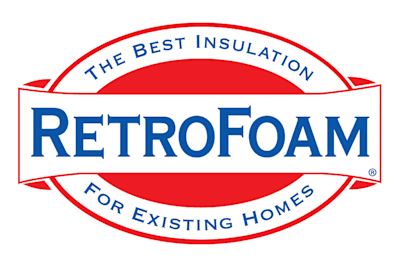Open Cell vs Closed Cell Spray Foam: What’s the Difference?


You’ve made the smart decision to go with spray foam insulation, but now comes the next big question: Open cell or closed cell spray foam.
Both types of spray foam insulation offer excellent performance, energy efficiency, and air sealing properties, but there are some pretty significant differences between the two. From how they’re applied to how they behave in different environments, understanding the difference between open cell foam and closed cell foam can help you make the best decision for your home, pole barn, or commercial space.
In this article, we’ll break down everything you need to know about open cell vs closed cell spray foam, how they work, where they shine, and how to choose the best fit for your project.
What's the Difference Between Open Cell and Closed Cell Spray Foam?
Let’s start with the basics.
Open cell and closed cell spray foam are both types of spray foam insulation, but they differ in structure, performance, and best-use scenarios.
Composition and Texture
- Open cell spray foam is lightweight, soft, and flexible. Think of it like a sponge that expands to fill all the gaps.
- Closed cell spray foam is rigid and dense. It hardens into a firm surface, making it incredibly strong and moisture-resistant.
Because open cell foam is pliable, it’s easier to work with if future electrical work or retrofitting is needed. On the flip side, closed cell foam’s durability makes it a great choice in areas where the insulation may be exposed to physical wear and tear.
How Spray Foam Expands
- Open cell foam expands up to 100 times its original size, making it great for getting into tight spaces – perfect for attics, crawl spaces, rim joists, and exposed wall cavities.
- Closed cell foam has a much lower expansion rate, but its density means it still creates an effective air seal with less material.
Blowing Agents: What Makes It Foam?
- Open cell spray foam typically uses water as a blowing agent.
- Closed cell spray foam uses a chemical blowing agent, which can sometimes have a faint odor during installation. Many modern products minimize off-gassing for safer indoor use.
Both types of spray foam are typically Class One Fire Rated, which means they won’t act as a catalyst and will self-extinguish once the flame source is removed.
Moisture Permeability
- Open cell foam is moisture permeable, meaning it can allow water vapor to pass through. This can be helpful in specific situations, like attic roof decks, where spotting leaks early is important.
- Closed cell foam is moisture impermeable and acts as a vapor barrier, which can prevent water intrusion in flood-prone or humid environments.
Sound Dampening Capabilities
If you’re looking to reduce noise in your home:
- Open cell spray foam insulation offers better sound dampening due to its soft, spongy texture that absorbs sound waves.
- Closed cell foam is too dense to significantly reduce noise transmission.
Note: Neither product is truly “soundproof,” but open cell foam is a great step toward quieter living spaces.
Do Both Create an Air Seal?
Yes! One of the biggest benefits of spray foam insulation is the air seal it creates.
- Closed cell spray foam requires at least 2 inches to create an effective seal.
- Open cell spray foam needs about 3 inches to reach that same air-sealing threshold.
Beyond those depths, adding more foam doesn’t significantly improve performance. It’s all about sealing the air leaks.
Open Cell vs Closed Cell R-Value
The R-Value (which measures thermal resistance) varies:
- Open cell foam typically has an R-Value between R-3.6 and R-3.9 per inch.
- Closed cell foam is higher, ranging from R-6 to R-7 per inch.
Closed cell spray foam insulation gives you more thermal resistance in a thinner layer, but both can provide excellent performance when applied correctly.
Choosing the Right Type of Foam for Your Project
It’s not always about which type is “better” – it’s about which type is right for the space.
Here are a few common recommendations.
- Use open cell spray foam in attics, walls, and ceilings when sound dampening and cost-efficiency are priorities.
- Use closed cell spray foam in basements, crawl spaces, and exposed areas where durability and moisture resistance matter most.
A Quick Word About RetroFoam
When it comes to insulating existing walls in older homes, spray foam isn’t always the go-to, but injection foam insulation is.
RetroFoam is a unique type of injection foam insulation that’s specifically designed for enclosed wall cavities. Unlike spray foam, RetroFoam is injected from the exterior of the home and fills the cavity completely, creating an air seal without the need to tear down drywall.
It’s odor-free, Class One Fire Rated, and fills every nook and cranny in the wall cavity, improving energy efficiency and comfort in homes where traditional insulation options just don’t cut it.
RetroFoam is available through a network of trained dealers across the U.S. and can be a perfect complement to spray foam for whole-home insulation.
If you want to learn more about foam insulation, check out the Learning Center on our website. If you’re ready to talk to the pros, visit our Dealer Finder to see if there is a RetroFoam dealer in your neck of the woods.
Key Points:
- Open cell spray foam is soft, flexible, and great for sound dampening and hard-to-reach areas.
- Closed cell spray foam is dense, rigid, and provides higher R-Value per inch and moisture resistance.
- Both types create an air seal that reduces drafts and improves energy efficiency.
- Open cell foam explands more, ideal for irregular cavities; closed cell is better where durability or vapor barriers are needed.
- Neither is truly “better” – the best choice depends on your goals, climate, and structure.
- RetroFoam injection foam is a great alternative for enclosed wall cavities in existing homes.
Related Articles
What is the Difference Between RetroFoam Injection Foam and Spray Foam Insulation?
The Best Spray Foam Insulation for Your Pole Barn: Open Cell, Closed Cell, or Both
About Amanda Emery
Amanda previously has worked as a breaking news and crime reporter, TV news producer, and editor. As a journalist, she has won several awards from The Society of Professional Journalists - Detroit Chapter and the Michigan Press Association. Amanda uses her experience as a journalist to write content that will help educate homeowners on foam insulation benefits. When Amanda isn’t writing, she’s spending time with her husband Chris, daughter Lilith-Maeve, and rescued huskies Danger and Wendigo. She also loves knitting, making art, and cooking.


